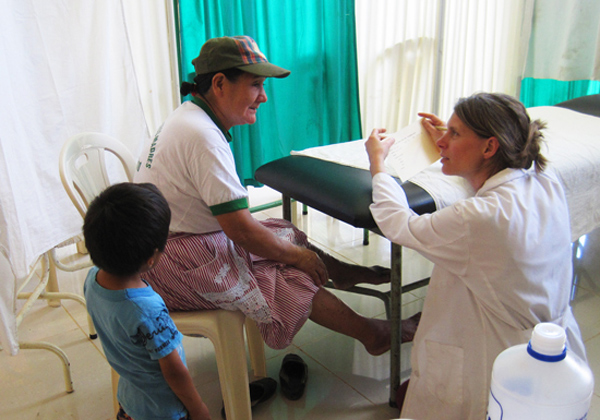
Let’s talk about volunteering your acupuncture skills in underserved areas today, shall we? What does this have to do with marketing? It’s related-ish. Keep reading.
Most acupuncturists I know are in this business because they want to give back, yes? You could say that’s the exact category of career we’ve chosen: the business of giving back.
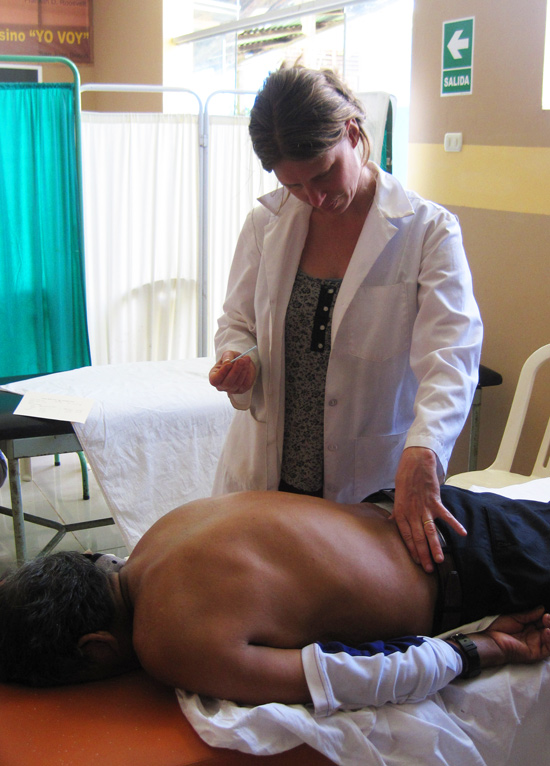
And many of us have thought to ourselves at some point in our careers – where can I volunteer with acupuncture? How can I reach all the people who can’t afford acupuncture, but who would clearly benefit from it? How can I give more of the skills that I have?
The short answer is acupuncture can take you all over the world to treat patients in need. Peru, Nepal, India, Thailand, Mexico, the list goes on and on. How exciting is that?!
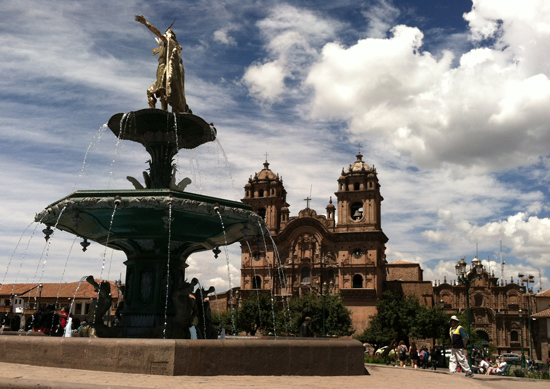
Cusco, Peru
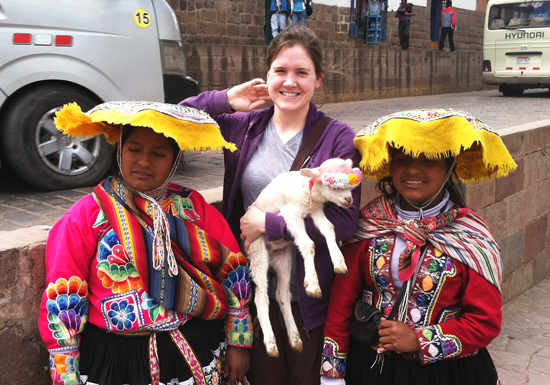
Acupuncture is a low-cost, low-risk, profoundly effective medicine that has the capacity to impact a huge range of illnesses – all without the need for tons of medical equipment or medication. (But you knew all that already.) This makes it an ideal medicine to deliver in remote parts of the world.
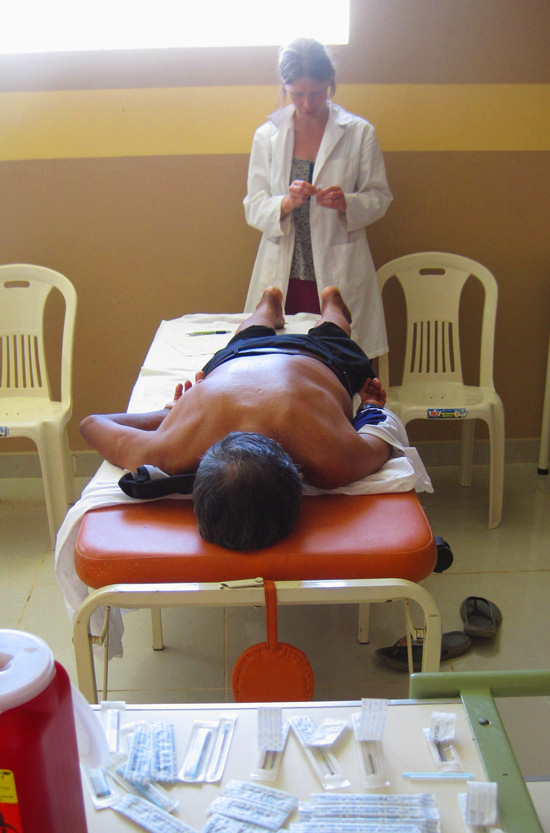
I’d like to share my personal experience volunteering in Peru with the nonprofit Project Buena Vista as a firsthand look at where your acupuncture skills and compassion can take you. (With muchos pictures, of course.)
This is a topic that’s near and dear to my heart. After an incredible trip to Peru with Project Buena Vista, I decided to volunteer as a board member for the nonprofit, so I can keep contributing to their cause even when I can’t make it to Peru.
At the bottom of this post, I’ve provided a list of many international (and domestic) organizations that you can travel with, all over the world, to deliver free acupuncture to those in need. So scroll on down there if you’re not into pictures. (You’re not into pictures?!)
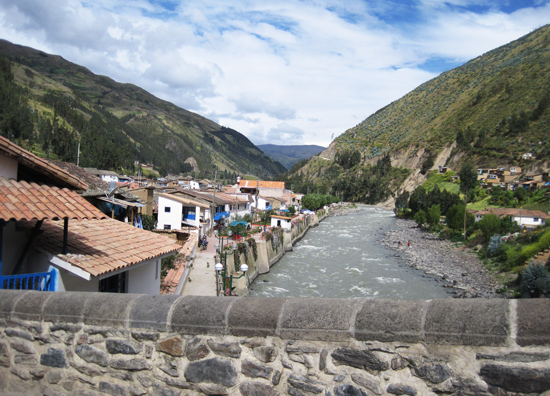
Before I dive into Peru and my incredible experience with Project Buena Vista: What does volunteering in underserved areas have to do with marketing, and why is it important?
1) Acupuncture Volunteering can benefit your practice:
The fundraising efforts and press releases that often accompany volunteering abroad can bring positive attention to your acupuncture business. Now, I’m not saying you should volunteer to provide acupuncture in underserved countries just so you can get good press. Volunteering in another country is a lot of work and takes serious commitment. You have to be in it for the right reasons, and publicity is not the right reason. Rather, publicity is a wonderful side benefit that will boost interest in and support for your practice.
The fundraiser I hosted for Project Buena Vista in my office landed us on the front page of the local newspaper, for example. Great exposure for everyone.
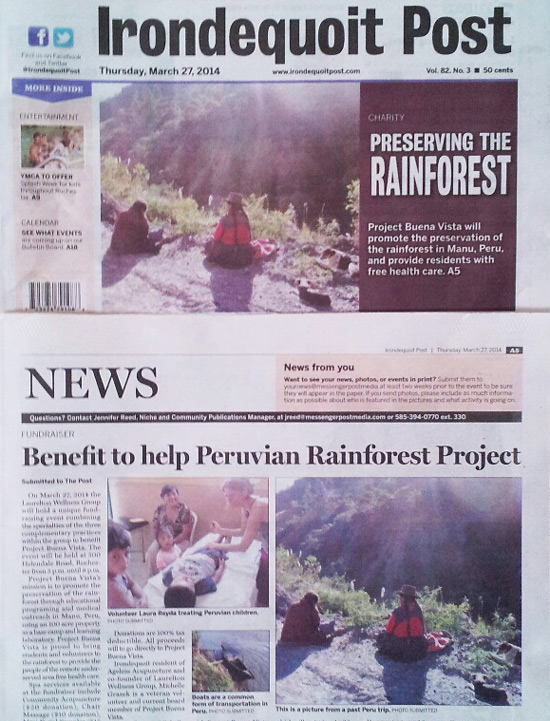
2) Acupuncture volunteering can benefit you as an acupuncturist (which in turn benefits your practice):
The learning curve is steep on many medical outreach trips – in a good way. Most volunteer opportunities in underserved countries involve community-style acupuncture that is jam-packed with patients from the moment you open the doors until the moment you close them. High volume clinics teach you how to be efficient: to know what’s important, to determine which treatment protocols are best, and to give your best to every patient, in a very limited time frame. This makes you a better practitioner, which will translate to your practice at home. You won’t forget what you’ve learned.
3) You can usually get Continuing Education (PDA) points for acupuncture volunteering:
According to the NCCAOM Recertification Handbook, you can get one PDA point for every 2 hours spent volunteering acupuncture services to people in underserved or low-income populations, the military, or for disaster relief. You can earn up to 10 PDA points per 4-year recertification cycle. There may be specific learning requirements that have to be met, but the organization you plan to travel with should be able to fill you in on those.
4) Personal growth:
Well, this one is a no-brainer, but I think it’s worth mentioning. Many people go on these kinds of trips to reconnect with acupuncture and remind of them why they are acupuncturists in the first place: to help people, to put patients first, and give of yourself for the greater good. It’s also incredible to see how differently other people live from us, and how happy they are without modern amenities, without fancy clothes, without a dream of ever owning a car. It can be refreshing and profound, if you let it.
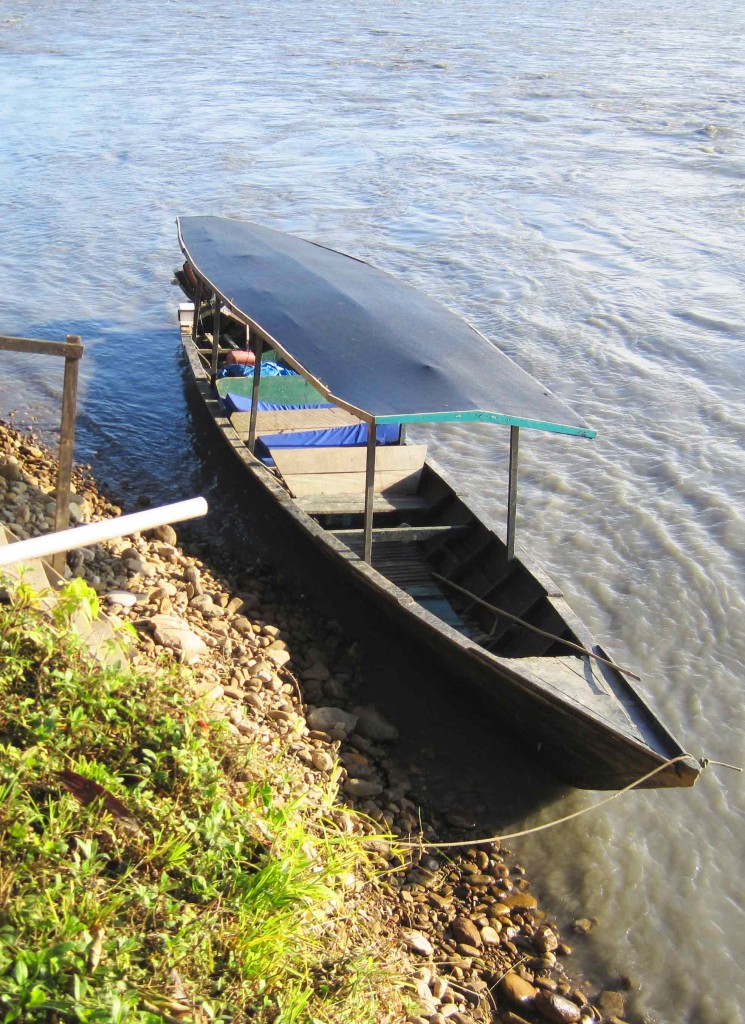
Project Buena Vista is a small nonprofit based in Oneonta, NY and the Manu Biosphere Reserve (aka, the rain forest) in Peru. Founded by Laura and Florian Reyda, their goals are to help preserve the rain forest through providing education and health care to the local people who live there.
Laura and Florian originally went to Peru as college freshmen for a summer class, and fell in love with the area and the people. They’ve been traveling in and out of Peru for the last 20 years and purchased property in Manu, Peru about 5 years ago. Shortly after that, they set up the nonprofit Project Buena Vista.
They are the best tour guides and travel companions you can ask for. After spending so much time in Peru over the years, they’re well-known in the area, well-connected, and very familiar with the needs and goals of the local people.
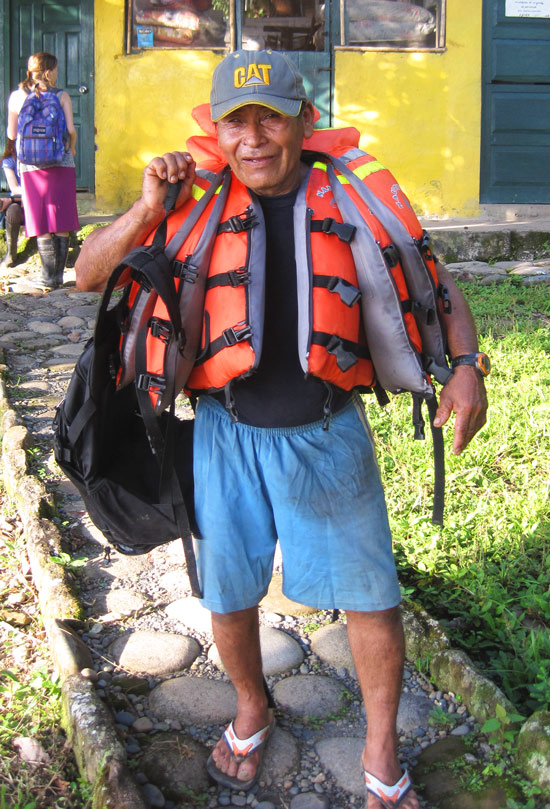
Laura, a licensed acupuncturist and massage therapist, leads the medical outreach portion of Project Buena Vista. I went with Laura to Peru in April 2013, with one other volunteer, Caitlin, to treat patients. It’s an experience I can’t wait to repeat. I love traveling, and traveling to give back to others – what could be better?
We spent two days in the gorgeous city of Cusco to purchase supplies and pick Caitlin up from the airport before taking a bus down into the jungle, which was about an 8-hour trip.
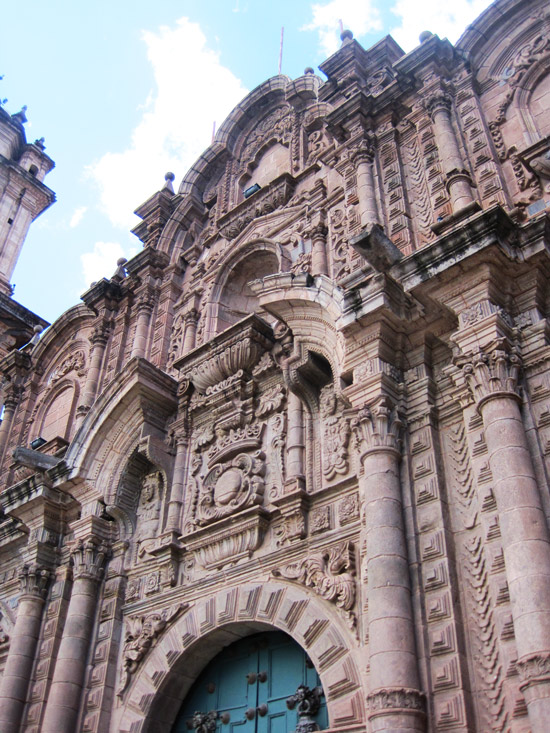
On our first day of clinic, in a town called Pilcopata on the edge of the rain forest, we treated 92 patients. I never imagined it would be possible to treat so many people with just two acupuncturists and one assistant. I was so proud of what we accomplished and the number of people we had the pleasure and honor of helping. I’ll be honest, it was hard, hard work, but it was worth it.
We took the next day off for travel deeper into the rain forest, to the Project Buena Vista property.
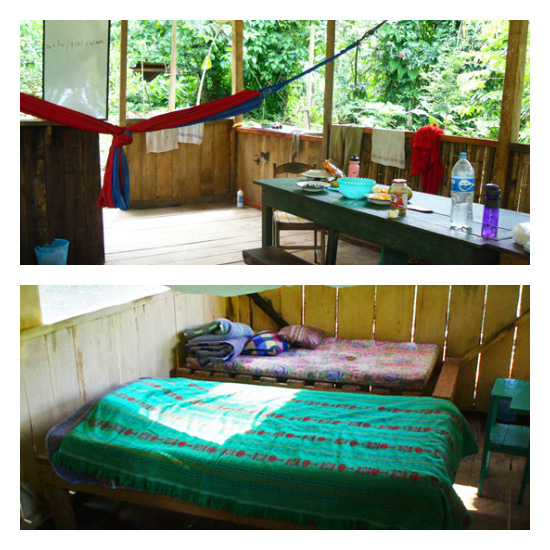
After some rest in the gorgeous, green jungle, we then spent the rest of our time treating patients in the rain forest town of Salvacion. Salvacion is across the river from Project Buena Vista’s property, and we took a boat to the opposite shore every morning. Then we had a 40 minute hike from the shore to the small town.
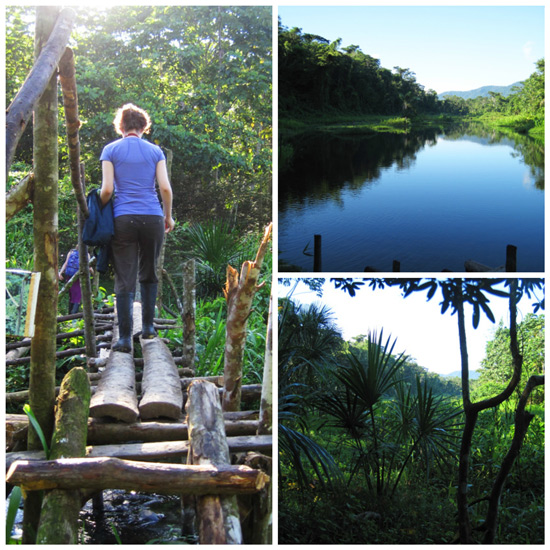
In Salvacion, over the rest of the week, we treated another 110 people. The pace was slower than in Pilcopata, but consistent. Our presence was announced on the local radio, as well as by one friendly guy with a loudspeaker in the center of town.
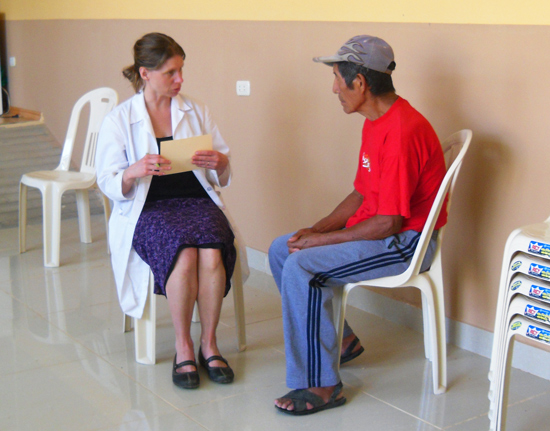
The people were kind, generous, and open-minded. Patients brought us water and ice pops as thank you gifts for treatment, to help alleviate the heavy jungle heat. Some patients showed up at our door because they heard there was “free pain treatment” but had no idea what acupuncture was. They were brave and let us treat them anyway.
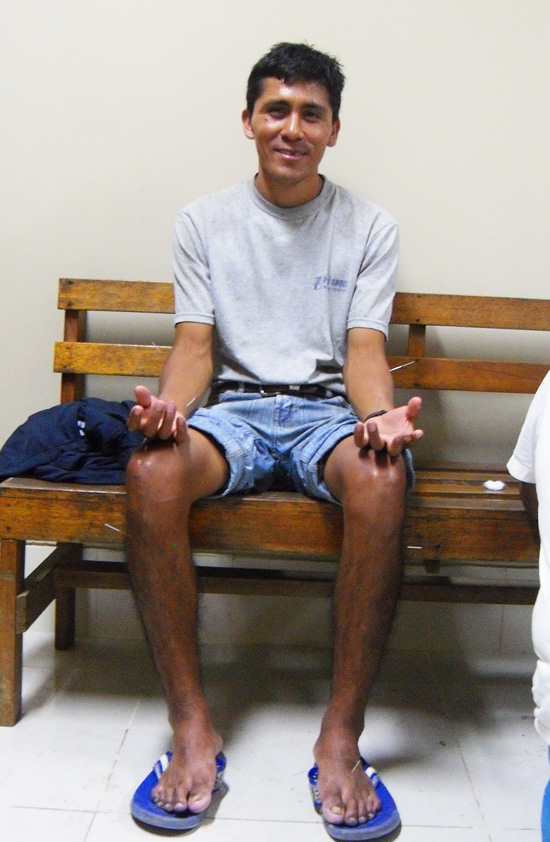
I took a lot of things away from this trip, including new perspectives on treating patients. It was great to get to work with Laura and learn efficiency as well as to see how she approaches treatment. I feel like whenever you get the chance to practice alongside someone else, you learn so much.
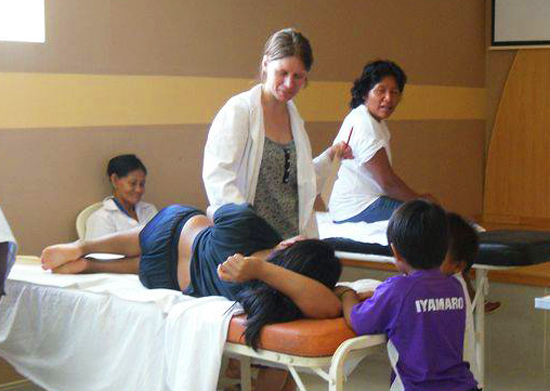
The thing that sticks with me the most from Manu, of course, was the people the fact that I got to ride a dirt bike through the jungle like Indiana Jones! Woop! Okay, no, it really was the people!
They were open, trusting, and kind. I brought a copy of my acupuncture license thinking I would have to show proof of my training, but not a single person asked for it. We set up shop in a tiny hospital (with no MD) in Pilcopata, and the lead nurse never asked us to prove that we were who we said we were. It was as simple as this: we said we were there to help, so they let us help. If only the rest of the world was so trusting and straightforward!
The people in the rain forest had more than I imagined they would, but they still had much less than the volume of “stuff” that other countries (ahem, USA) think is important. And yet it mattered not at all. They were still kind, still funny, still sweet and generous. I try to carry that lesson with me always.
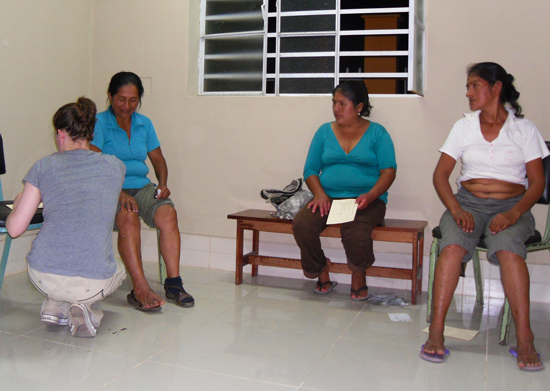
I look forward to returning to Manu, Peru so I can keep learning; I’m certain that every time I go, something new will surface. And I feel confident that most acupuncture volunteering trips are similar to this one, in that you’ll learn things you never expected.
If you want to travel with Project Buena Vista, check out their website at www.ProjectBuenaVista.org or feel free to shoot me a message on the Contact Page. Project Buena Vista travels to Peru twice a year, in late April and October. Laura’s next trip is October 9th, 2014, and she’s still accepting volunteers. Even if you’re not an acupuncturist, you can still be incredibly helpful.
Or, you can donate to Project Buena Vista if you’re so inclined.
And, as promised, here’s a list of the (mostly international) acupuncture volunteering groups that I’ve heard of. If you know of any that I’ve left off this list, please let me know so I can add them.
Acupuncture Volunteering Opportunities – Abroad and Domestic:
- Project Buena Vista (Peru) – www.ProjectBuenaVista.org
- Acupuncture Relief Project (Nepal) – www.AcupunctureReliefProject.org
- Acupuncture Without Borders (Domestic and international, such as Haiti) – www.AcuWithoutBorders.org
- Mindful Medicine Worldwide (Nepal and Thailand on the Thai-Burmese border) – www.MindfulMedicineWorldwide.org
- Pan-African Acupuncture Project (Mexico and Africa). Teach people in Mexico and Africa how to administer acupuncture to help manage AIDS and other conditions –www.GlobalAcupuncture.org
- Projects Abroad (Nepal) – www.Projects-Abroad.org
- Barefoot Acupuncturists (Mumbai, India) – www.BarefootAcupuncturists.com
- Acupuncture Ambassadors, for those more interested in the research side of acupuncture volunteerism abroad – http://AcupunctureAmbassadors.org
Have you traveled to treat patients in underserved or low-income areas, or for disaster relief? What was your experience like? Have you always wanted to travel abroad to treat new populations?
Original article and pictures take www.modernacu.com site




